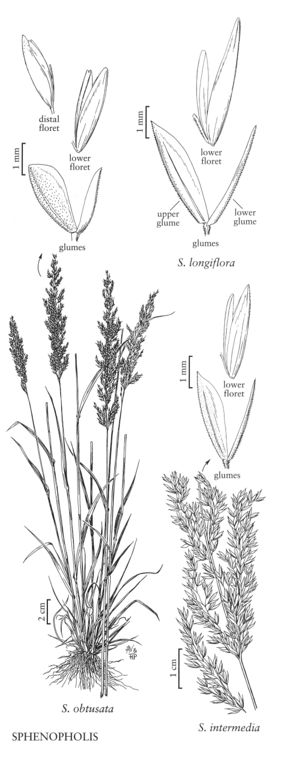Sphenopholis longiflora
Culms to 70 cm. Sheaths smooth or retrorsely scabridulous, usually glabrous, sometimes pubescent; ligules 0.7-2.6 mm, glabrous, erose; blades 8-18 cm long, 2-10 mm wide, flat. Panicles 15-20 cm long, 1.5-2.5 cm wide, nodding, not spikelike, spikelets loosely arranged. Spikelets 4-5.2 mm. Lower glumes about 1/3 as wide as the upper glumes; upper glumes 3-3.9 mm, elliptical to oblanceolate, not subcucullate, width/length ratio 0.17-0.26, apices acute; lowest lemmas 3.1-4.2 mm, glabrous; distal lemmas usually smooth on the sides, rarely scabridulous distally, unawned; anthers 0.2-0.7 mm. 2n = 14.
Distribution
Ark., Tex., La.
Discussion
Sphenopholis longiflora grows in forest bottoms along bayous and streams, from 0-50 m, in Texas, Arkansas, and Louisiana. Erdman (1965) treated both S. longiflora and S. intermedia as S. obtusata var. major (Torr.) Erdman. They are morphologically distinct from each other, and from S. obtusata.
Selected References
None.
